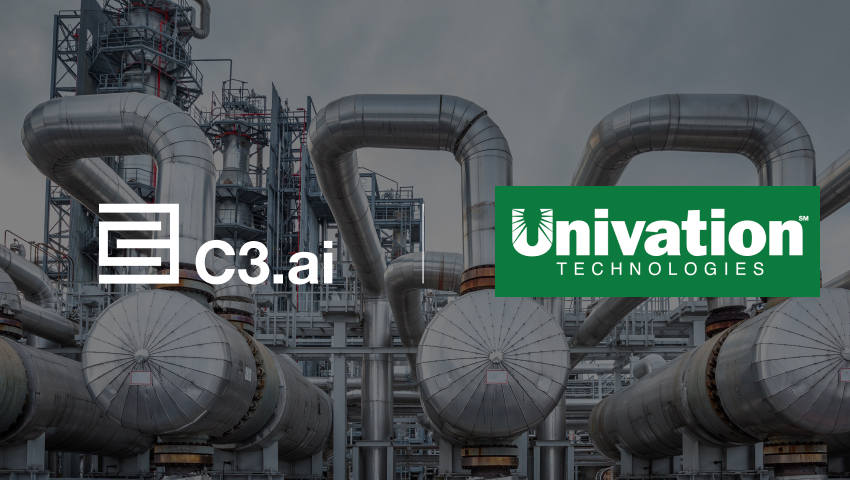At Shell, there are plenty of reasons to use AI and data to transform their business.
From increased energy demands and unconnected environments to mounting pressure to fight climate change, the oil and gas industry is at a crossroads. Energy companies like Shell can either adhere to the status quo or embrace the idea of a low-carbon energy future.
The transition towards a more distributed, diverse and decentralized energy system means optimizing end-to-end processes and maintaining them at scale. That means solutions that can be deployed globally at a rapid pace are crucial. And it means Shell has had to become an AI-powered technology company.
Accelerating digital transformation
For example, last November, Shell founded the Open AI Energy Initiative (OAI) alongside Baker Hughes, Microsoft, and enterprise AI company C3 AI to help accelerate the energy industry’s digital transformation.
According to Dan Jeavons, vice president of computational science and digital innovation at Shell, the OAI offers industry leaders the opportunity to collaborate openly, fairly and transparently. It allows them to create interoperable standards between AI applications and accelerate the adoption of digital technology and reach net-zero emissions in the future.
“We have committed to be net-zero by 2050 or sooner and to achieve a 50% reduction in scope one and two emissions by 2030,” he said.
While digital technology may not be the silver bullet, it is one of the core levers Shell is using to accelerate the energy transition. Jeavons adds, “While we’re going to need to transform a lot of hardware to change the energy sector, we can also leverage the data we have today and use that to transform the system.”
AI plays a critical role in Shell’s business strategy
Shell has already implemented several AI initiatives over the years, including deploying reinforcement learning in its exploration and drilling program; rolling out AI at public electric car charging stations; and installing computer vision-enabled cameras at service stations.
Recently, the company also launched the Shell.ai Residency Programme, which allows data scientists and AI engineers to gain experience working on a variety of AI projects across all Shell businesses.
Currently, Shell is deploying north of 100 AI applications into production every year. They’ve also developed a central community of more than 350 AI professionals who are designing AI solutions using vast pools of data available throughout the many businesses within Shell.
AI helps Shell with predictive maintenance
“Reliability and safety are absolutely fundamental,” said Jeavons. “Having the ability to identify when things are going wrong and intervene proactively has been a priority for us.”
AI has allowed Shell to use predictive monitoring to augment monitoring techniques they already had in place.
To put that in perspective, Jeavons claims it has over 10,000 pieces of equipment currently being monitored by AI – from valves and compressors to dry gas seals, instrumentation and pumps, while AI also provides predictions on potential failure events. To monitor all that equipment, 3 million sensors gather 20 billion rows of data every week, while nearly 11,000 machine-learning models allow the system to make more than 15 million predictions each day.
Historically, Shell relied on physics-based models to make these predictions. Prior to the advent of a predictive maintenance program run by C3 AI, the company would typically replace parts after a certain period. This approach meant that parts were often replaced while they were still in good condition. An alternative strategy was to wait until something failed. With equipment failure, assets needed to shut down temporarily for repairs, affecting production.
AI-based predictive maintenance has enabled the company to lower equipment and maintenance costs by using resources more efficiently, decreasing production interruptions, and avoiding unplanned downtime.
Tom Siebel, CEO of C3 AI, explained that there are numerous infrastructure and orchestration issues that surround AI.
“It’s not that hard to build machine learning models,” he said. “What’s hard is to put two million machine learning models in production, into one application.”
With a proactive technical monitoring approach, however, Shell’s data scientists could analyze thousands of data points simultaneously and enable engineers and others to draw insights from that data.
“Our team uses that data to understand what normal behavior across our asset base looks like in particular cases, including equipment like compressors, valves and pumps,” Jeavons says. “Then we create forecasts of what we think normal is going to be in the coming periods. From that forecast, we can identify when normal conditions are no longer occurring and then link that back to historical events.”
AI for optimization is next for Shell
Now, Shell has commercialized its AI predictive maintenance applications built with C3 AI software. Going forward, Jeavons says the company is now laser-focused on optimization.
“This means we can identify ways of producing more efficiently, generating more output for the same cost and more importantly, we can also look at the CO2 footprint of these processes and start to optimize accordingly,” said Jeavons.
In the near future, he added, Shell is also exploring how AI can be leveraged to monitor carbon capture, storage installations and methane levels.
“These ventures involve making our existing business more effective and efficient, but also play a key role in our energy transition strategy,” he said.
Read the full article here.




